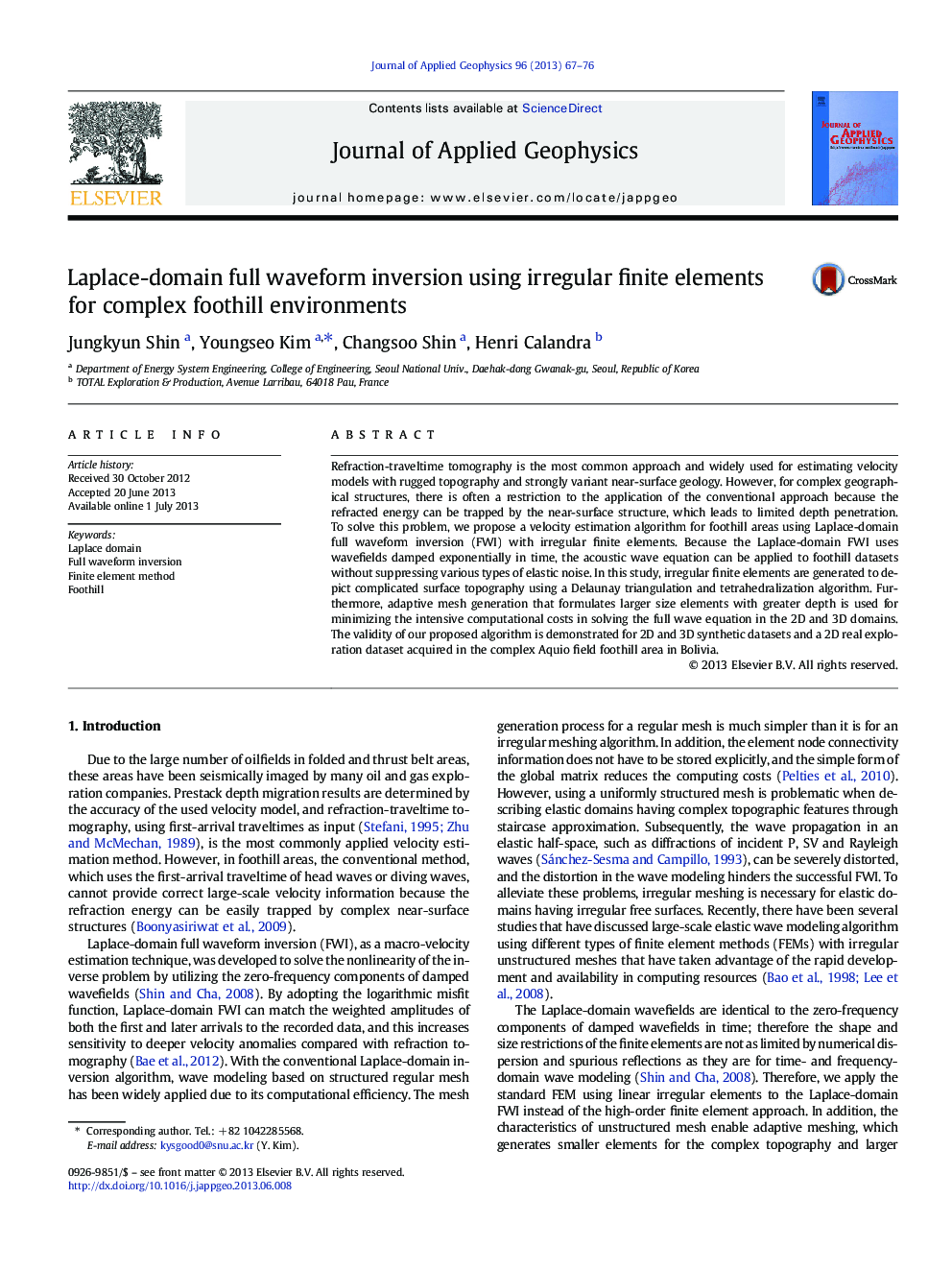| Article ID | Journal | Published Year | Pages | File Type |
|---|---|---|---|---|
| 6447335 | Journal of Applied Geophysics | 2013 | 10 Pages |
Abstract
Refraction-traveltime tomography is the most common approach and widely used for estimating velocity models with rugged topography and strongly variant near-surface geology. However, for complex geographical structures, there is often a restriction to the application of the conventional approach because the refracted energy can be trapped by the near-surface structure, which leads to limited depth penetration. To solve this problem, we propose a velocity estimation algorithm for foothill areas using Laplace-domain full waveform inversion (FWI) with irregular finite elements. Because the Laplace-domain FWI uses wavefields damped exponentially in time, the acoustic wave equation can be applied to foothill datasets without suppressing various types of elastic noise. In this study, irregular finite elements are generated to depict complicated surface topography using a Delaunay triangulation and tetrahedralization algorithm. Furthermore, adaptive mesh generation that formulates larger size elements with greater depth is used for minimizing the intensive computational costs in solving the full wave equation in the 2D and 3D domains. The validity of our proposed algorithm is demonstrated for 2D and 3D synthetic datasets and a 2D real exploration dataset acquired in the complex Aquio field foothill area in Bolivia.
Related Topics
Physical Sciences and Engineering
Earth and Planetary Sciences
Geophysics
Authors
Jungkyun Shin, Youngseo Kim, Changsoo Shin, Henri Calandra,
